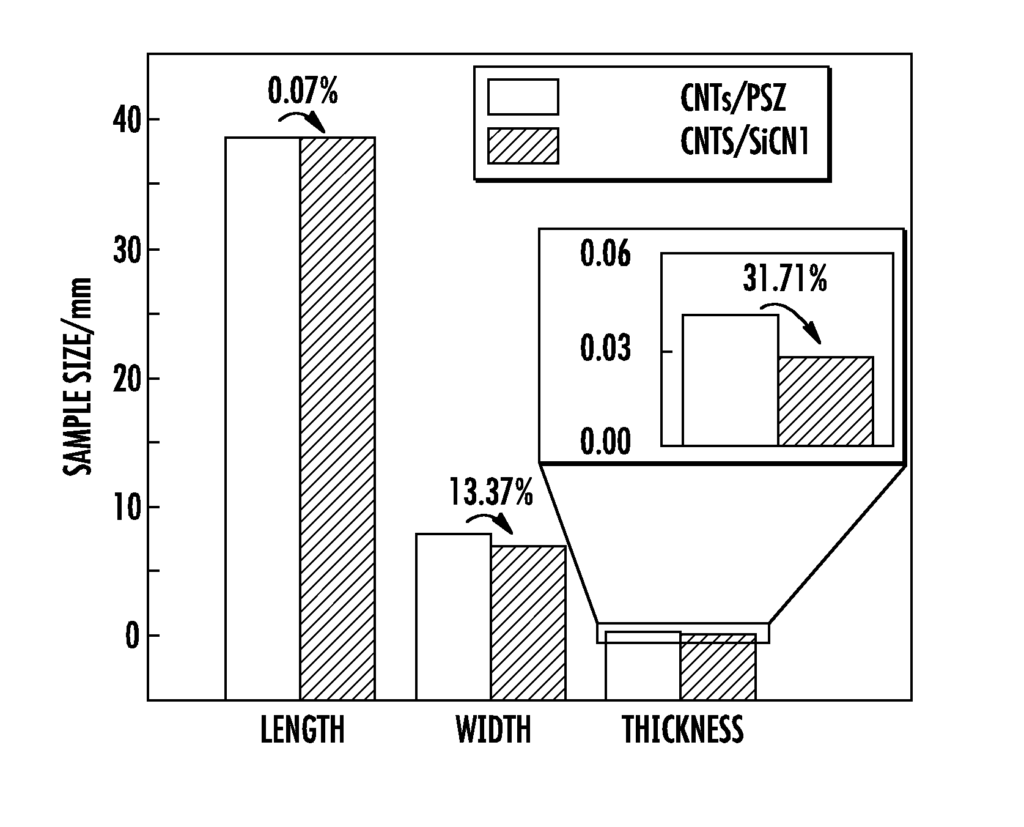Unlock the Future of High-Performance Materials with Our Ceramic Composite Innovation
Introduction
In industries where strength, durability, and thermal resistance are non-negotiable, materials that can withstand extreme conditions while maintaining their integrity are essential. Enter our patented “Ceramic Composite Materials and Methods” (Patent #10214455), a breakthrough in material science designed to redefine the boundaries of what’s possible in advanced manufacturing and engineering.
The Challenge
In sectors like aerospace, automotive, and defense, traditional materials often face limitations when exposed to extreme environments. Metals can degrade under high temperatures, polymers can warp or melt, and other ceramics may crack under stress. The need for a material that combines lightweight properties with exceptional strength and thermal resistance has never been more critical. These industries require materials that can not only endure but excel in challenging conditions, from the blistering heat of a jet engine to the intense pressures of deep-space exploration.
The Solution
Our ceramic composite material is engineered to meet these exacting demands, offering a unique combination of properties that set it apart from anything currently on the market. Here’s why licensing this technology can propel your business to the forefront of material innovation:
- Unmatched Strength and Durability: This patented composite material is designed to withstand the most demanding environments. Its structure is optimized for high strength-to-weight ratios, providing the robustness needed for applications where material failure is not an option. Whether used in structural components, protective coatings, or other critical applications, this material offers reliability where it counts.
- Exceptional Thermal Resistance: One of the standout features of our ceramic composite is its ability to maintain stability at extreme temperatures. This makes it ideal for applications in aerospace, automotive, and industrial settings where materials are regularly exposed to high heat. With this technology, your products can go further and endure more, opening up new possibilities for design and function.
- Versatile Applications Across Industries: The versatility of this ceramic composite material is one of its greatest strengths. It can be tailored to meet the specific needs of a wide range of industries, from aerospace components that require lightweight and heat-resistant materials to industrial machinery that demands high durability. This adaptability allows you to innovate and create solutions that are not only functional but superior.
- Sustainable and Cost-Effective Manufacturing: Our patented methods ensure that these advanced materials can be produced efficiently and at scale, reducing waste and lowering production costs. This sustainability factor not only benefits your bottom line but also aligns with growing global demand for environmentally conscious manufacturing practices.
- Competitive Advantage and Market Leadership: By licensing this technology, you position your company as a leader in material innovation. In a competitive market where performance and reliability are key differentiators, offering products that incorporate our ceramic composite material will set you apart. This patent is more than just a material—it’s a strategic asset that can elevate your brand and drive growth.
The Opportunity
The future of high-performance materials is here, and it’s ready to be licensed. With our ceramic composite materials and methods, you’re not just adopting a new material—you’re embracing a new standard of excellence in engineering and manufacturing. This patent offers a unique opportunity to enhance your product offerings, improve performance, and lead the way in industries where innovation is essential.
Don’t miss your chance to be at the cutting edge of material science. License this technology today and unlock the full potential of what your products can achieve.

- Abstract
- Claims
I claim:
1. A method of forming a composite material, the method comprising:
4. The method of claim 1, further comprising:
8. The method of claim 1, wherein the providing of the carbon nanoscale fiber network comprises:
Share
Title
Ceramic composite materials and methods
Inventor(s)
Chengying Xu
Assignee(s)
Florida State University Research Foundation Inc
Patent #
10214455
Patent Date
February 26, 2019
